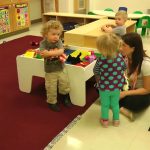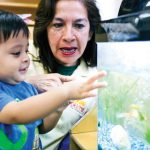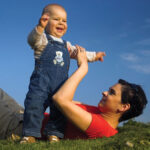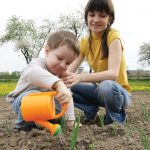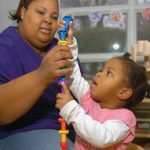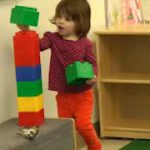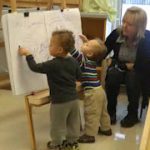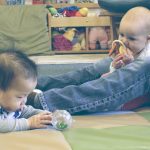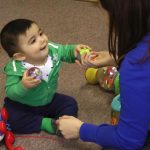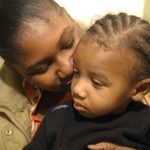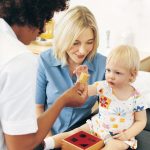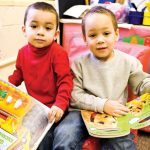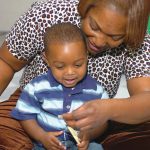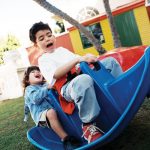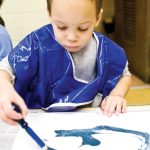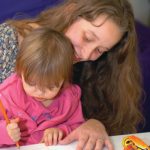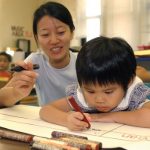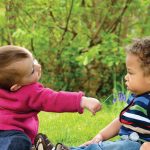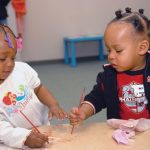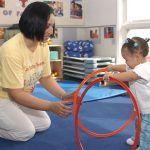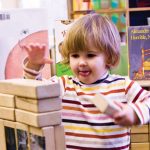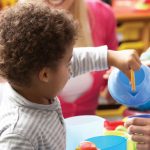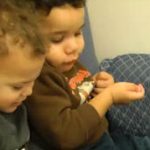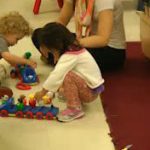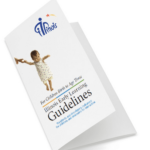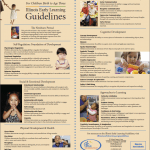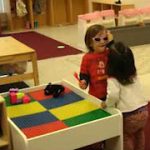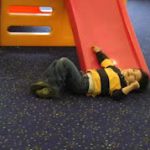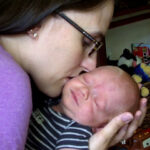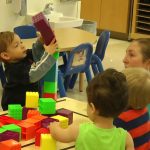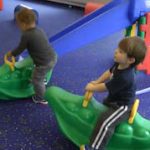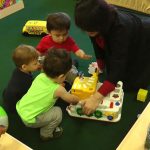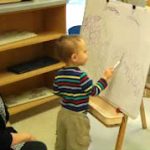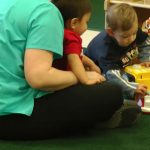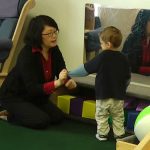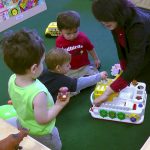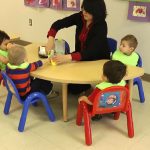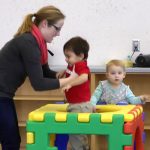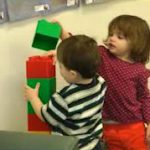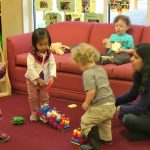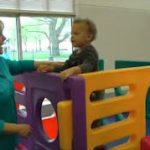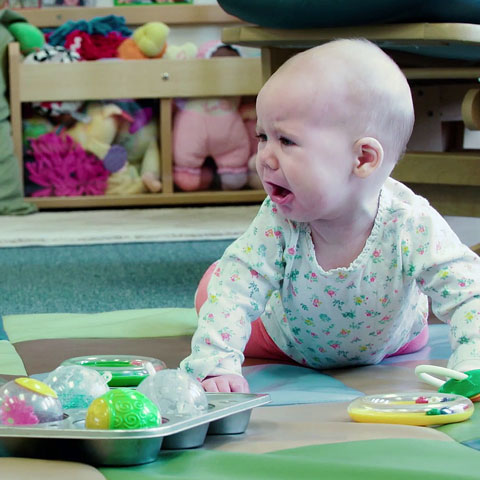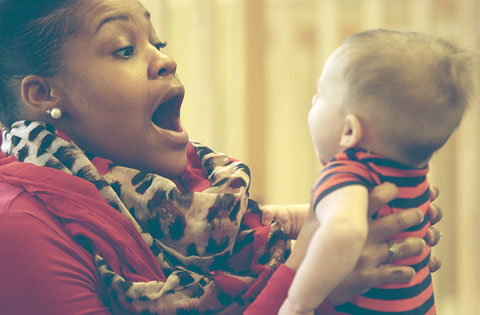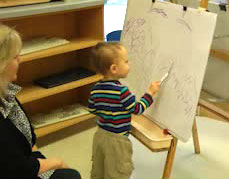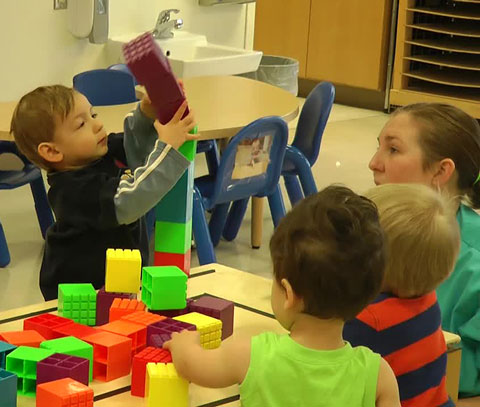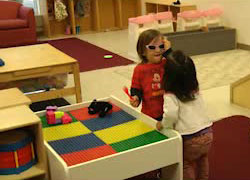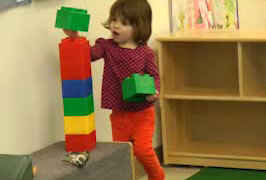Category: Illinois Early Learning Guidelines: For Children Birth to Age Three (IELG)
-

Illinois Early Learning Guidelines: Crosswalks and Alignments
IELG/Baby TALK Curriculum Crosswalk Nurse-Family Partnership Alignment with Illinois Early Learning Guidelines Parents as Teachers Alignment with Illinois Early Learning Guidelines Birth to Age 3 Teaching Strategies: Alignment of The Creative Curriculum for Infants, Toddlers & Twos with Illinois Early Learning Guidelines Birth to Age 3 Birth to 3 Guidelines–IELDS Crosswalk Shows how many areas…
-
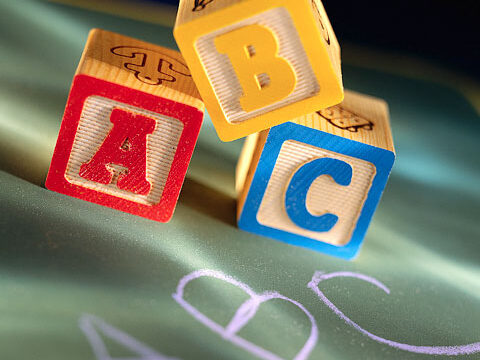
Illinois Early Learning Guidelines: Standards
The following is a convenient list of the standards included in the Illinois Early Learning Guidelines. The standards are general statements of what children should know and be expected to do by the time they reach 36 months of age. (Note: There is no standard for the newborn section of the guidelines.) Self-Regulation: Foundation of…
-
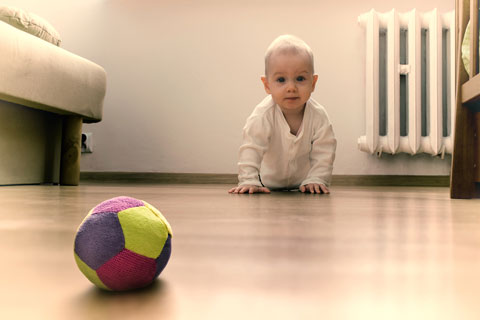
Curiosity and Initiative
This section describes how infants and toddlers use all their senses to learn about their world.
-

Problem Solving
This section describes how infants and toddlers learn to solve problems and consider the results of their actions.
-

Persistence, Effort, & Attentiveness
This section describes how infants and toddlers use their early experiences to develop the ability to focus on and complete simple tasks.
-
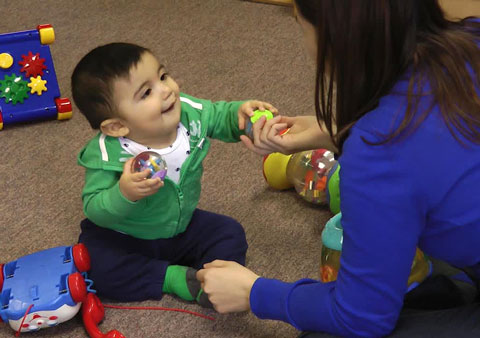
Creativity, Inventiveness, and Imagination
This section of the guidelines describes how infants and toddlers become more purposeful when engaging with their environment.
-
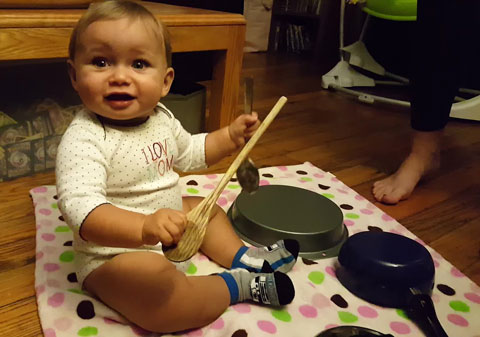
Confidence and Risk-Taking
This section of the guidelines describes how infants and toddlers develop confidence in exploring new experiences and taking developmentally appropriate risks.
-
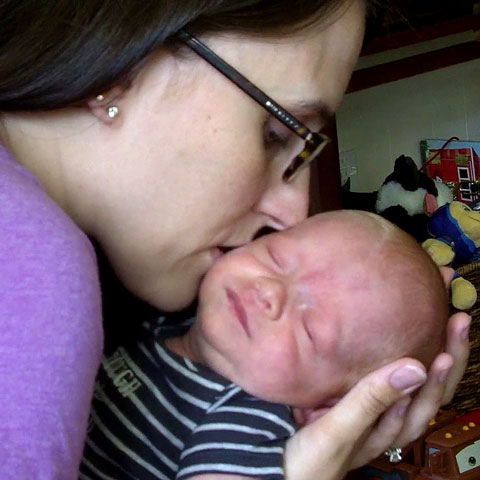
The Newborn Period
This Early Learning Moment provides an overview of the Newborn Period as explained in Illinois Early Learning Guidelines for Children Birth to Age 3.
-
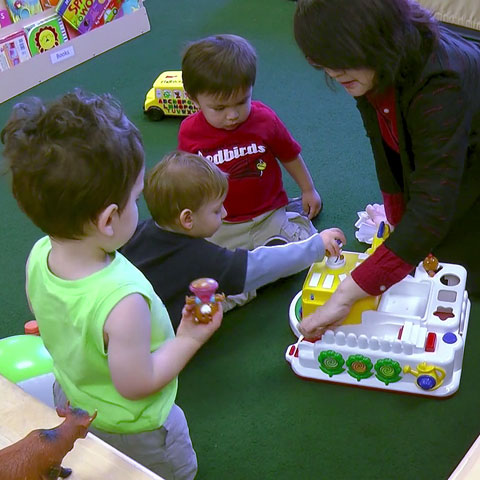
Self-Regulation: Foundation of Development
This Early Learning Moment provides an over view of the Self-Regulation: Foundation of Development section in the Illinois Early Learning Guidelines for Children Birth to Age 3.
-
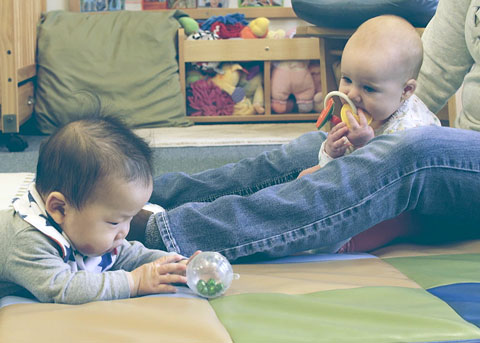
Cognitive Development
This section of the guidelines describes how infants and toddlers learn to think and reason. As they develop cognitive skills, they build understanding about the world around them. Their memory skills, spatial skills, and reasoning skills increase.
-
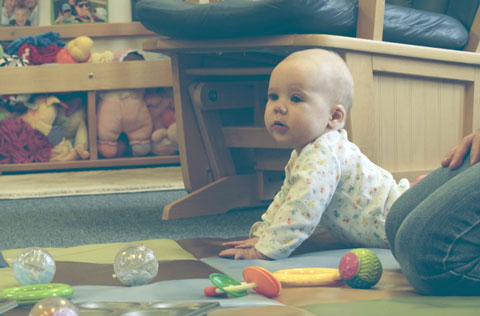
Physical Development and Health
This section of guidelines describes how infants and toddlers learn to move their bodies, take in their world through their senses, and carry out self-care routines. This section also explains how physical skills progress through development as young children’s bodies grow stronger and more able to move purposefully and with ease during everyday play and…
-
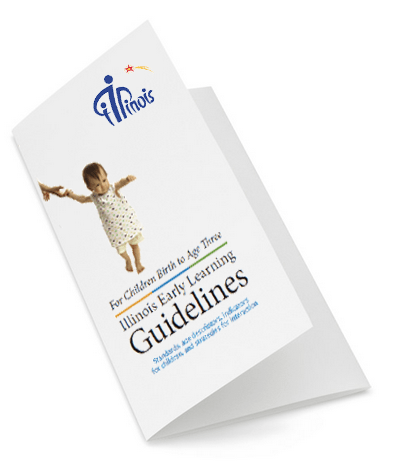
Guidelines Brochure
This handy pamphlet, which also lists all the standards, can be handed out to parents and others interested in learning more about the Guidelines.
-
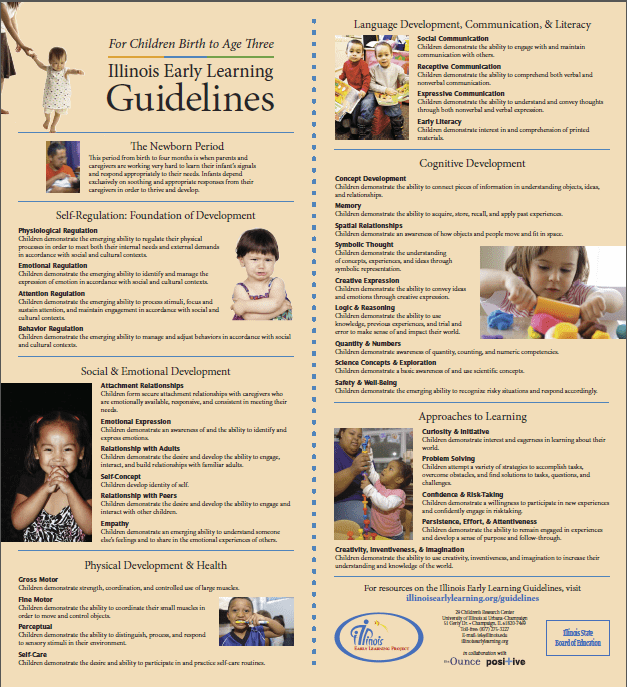
Guidelines Poster
A large poster that lists all of the standards in the Guidelines.
-

Interactive Guidelines Flip Book
This is a convenient collection of tables with the indicators for children and strategies for interaction for each standard in the Illinois Early Learning Guidelines.
-
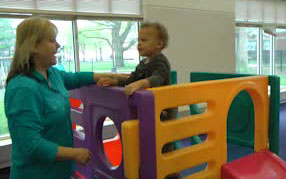
You Made It
This video takes place in the gross motor room of a university laboratory child care and preschool. This room is used for gross-motor activities by all classrooms in the center during inclement weather. Max (21 months) is trying to get up the climber, and the teacher helps him get to the top.
-
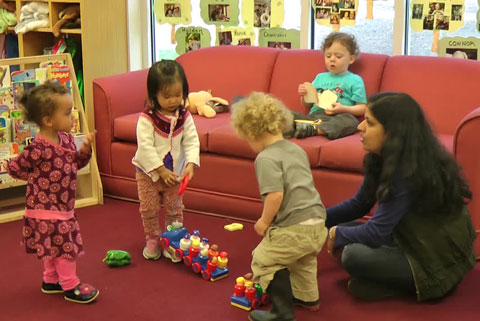
Two Trains
Sadie (26 months) pulls two trains across the carpet and sits down on the teacher’s lap. Sadie and the teacher are talking about the two trains while Daniel watches. Daniel reaches down to take the handle of one of the trains, to which Sadie objects. The teacher then asks Sadie to give one of her…
-

A Tower Together
The teachers provided balance in both supporting Anna and allowing her space to work through situations independently. She followed Anna’s reactions and did not intervene too early.
-
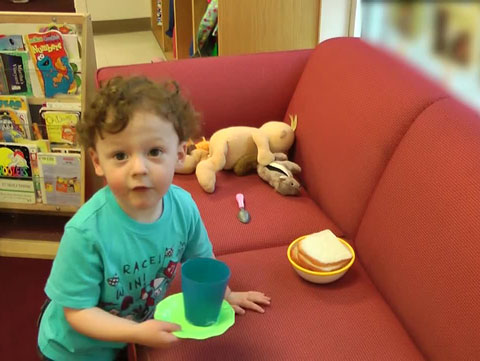
Tea Party
Through a progression of short clips taken over a span of 30 minutes, this video focuses on Hudson (at 30 months, the oldest in the class) gathering items, stuffed animals, and dolls; arranging them on a couch; and (briefly) enjoying his tea party with his stuffed animals.
-

The Step
The teacher provides Alicia with support to move the bolster and supervises her so she can safely use it as a step.
-
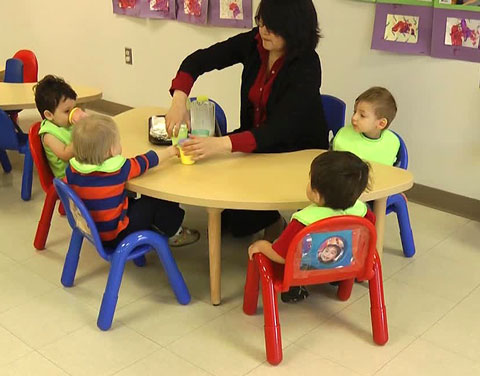
Snack Time
This interaction demonstrates the teachers’ cooperation and understanding of their roles in classroom management. It also demonstrates appropriate teacher-child interactions at the snack table.
-
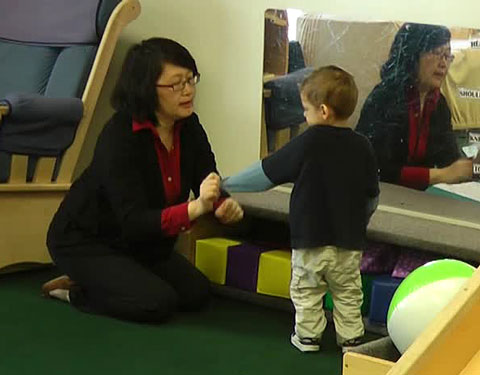
Roll Them Up
This interaction shows the teacher trying to decipher what Jayden is trying to do and what he wants.
-

Ready? Boing!
This interaction shows how the teacher appropriately engages the children by asking Spencer to participate and redirecting Mason when he takes the bear.
-
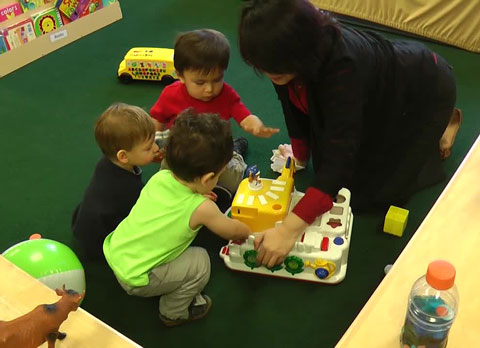
Press Here
Jayden (20 months), Mason (21 months), Spencer (20 months), and the teacher, Sui Ping, are sitting on the floor engaged with an activity box. Sui Ping is demonstrating for Mason how to make the small bear “jump” off the toy by pushing a button. The other two boys are also trying to play with the…
-
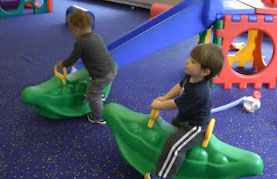
Pea Pod Rockers
Max (21 months) and Kenyon (27 months) are near the pea pod rockers, attempting to climb onto them. The teacher steps in to assist Max in climbing onto the rocker. She offers guidance to him and is close to him as he tries to climb onto the rocker.
-
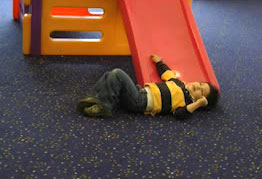
Let’s Get Up
Micah (30 months) is lying on the ground next to the slide. The teacher leans down and teasingly touches both of his hands before lifting him up to his feet. Micah walks over to the corner, picks up a ball, and throws it off-camera to the teacher, who tosses it back. Micah had shown very…
-

The Duck
This clip demonstrates a young toddler’s ability to connect a picture on a toy with a word and a sign she had been taught.
-
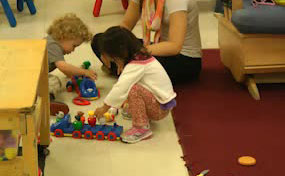
Filling the Trains
This video takes place in a toddler room of a university laboratory child care and preschool. Daniel (25 months) and Sadie (26 months) are playing with trains and putting people back into their trains. The teacher is nearby talking with them, narrates their activities, and helps Sadie to see that she needs to put the…
-
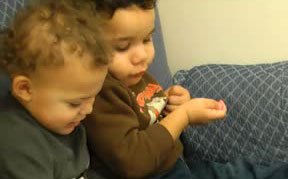
Down There
The video takes place in a toddler room of a university laboratory child care and preschool. Max (19 months) and Levi (27 months) are in the glider chair looking at a nursery rhyme book together. They are engaged in the books for a short while and then begin to rock the chair together. The nearby…
-
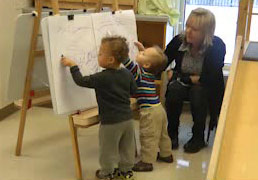
Blue or Purple
This is a nice example of the caregiver reading the cues of the child and assisting them through an interaction that had the potential for conflict.
-
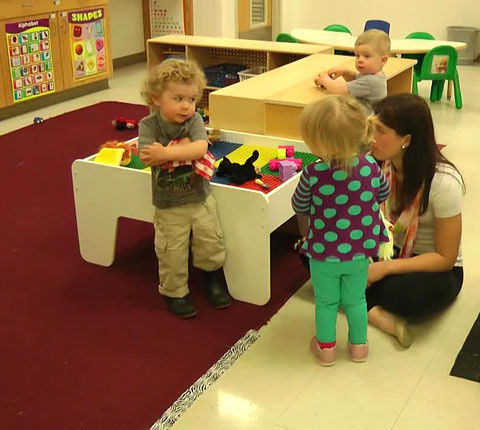
All Done
This video takes place in a toddler room of a university laboratory child care and preschool. Daniel (25 months) and Mia (23 months) are standing at the Lego table. A teacher is helping Mia ask Daniel to share the blanket he is using when he is done. The teacher provides her with words to use,…
-
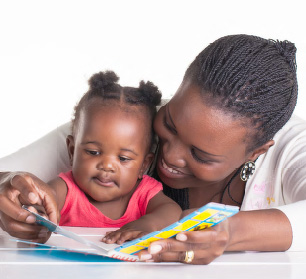
Illinois Prevention Initiative: Implementation Manual 2013
The Illinois Prevention Initiative Implementation Manual is based on the Illinois Birth to Five Program Standards and Quality Indicators and is organized as such.
-
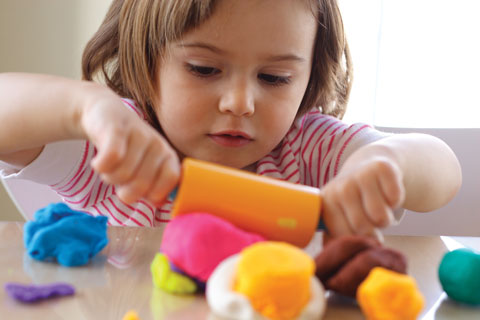
Illinois Early Learning Guidelines: A Guide for Parents
The Guidelines are a resource that is meant for people who want to understand more about how babies and toddlers grow and develop.
-

Approaches to Learning: Creativity, Inventiveness, & Imagination
Standard: Children demonstrate the ability to use creativity, inventiveness, and imagination to increase their understanding and knowledge of the world. Children are active learners when exploring their environment. They first observe the world around them. They pay attention to sounds, colors, movement, and engage in interactions with their caregivers. As they grow, children become more…
-
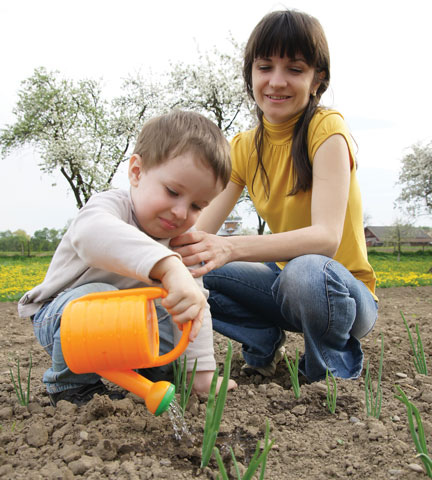
Approaches to Learning: Persistence, Effort, & Attentiveness
Standard: Children demonstrate the ability to remain engaged in experiences and develop a sense of purpose and follow-through. Children use sensory exploration and social interaction to learn about their world. While young children do not have the capacity to attend to objects or people for very long periods of time, they are building this skill…
-

Approaches to Learning: Confidence & Risk-Taking
Standard: Children demonstrate a willingness to participate in new experiences and confidently engage in risktaking. Children build their confidence through their relationships with nurturing and responsive caregivers. Caregivers who are attuned to children’s needs and respond consistently and promptly, nurture feelings of self-worth in children. Children learn to feel that they are important, and they…
-

Approaches to Learning: Problem Solving
Standard: Children attempt a variety of strategies to accomplish tasks, overcome obstacles, and find solutions to tasks, questions, and challenges. Children build the foundation for problem-solving skills through nurturing relationships, active exploration, and social interactions. In infancy, children learn that their actions and behaviors have an effect on others. For example, children cry to signal…
-

Approaches to Learning: Curiosity & Initiative
Standard: Children demonstrate interest and eagerness in learning about their world. Children are born with a natural interest in the people and objects found in their environment. After all, they are seeing things for the first time! Children use all of their senses to take in all this new information and use their developing skills…
-
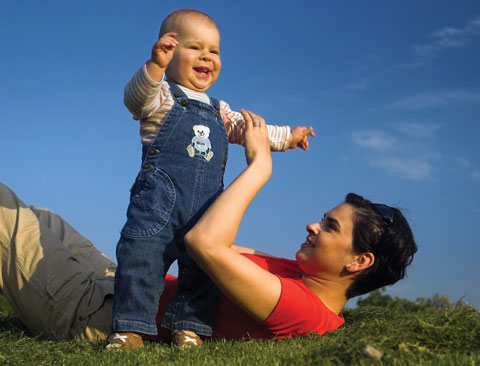
Approaches to Learning: Introduction
Children are born ready to learn, and the first three years are the time when children develop the habits in how they approach and explore their world.1 Depending on the quality of their early experiences, children either form healthy or unhealthy attitudes toward learning. Children’s earliest relationships, cultural and societal contexts, and individual influences directly…
-

Domain 4: Safety & Well-Being
Standard: Children demonstrate the emerging ability to recognize risky situations and respond accordingly. In the first few years of life, children depend on their caregivers to keep them safe and healthy for proper development. Children are beginning to grow in their capacity to recognize potentially unsafe or unhealthy situations, but will need a lot of…
-
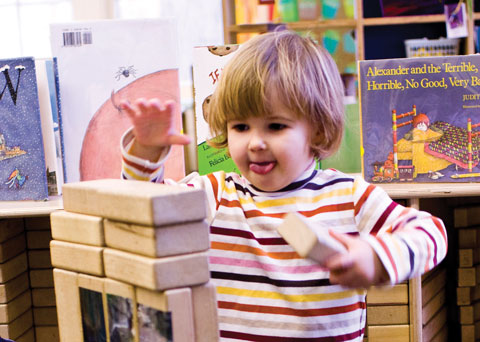
Domain 4: Science Concepts & Exploration
Standard: Children demonstrate a basic awareness of and use scientific concepts. Children learn about science concepts through the exploration of both their indoor and outdoor environment. They use all of their five senses to take in new information and actively learn about their world. As newborns, children use observation to make sense of their surroundings.…
-
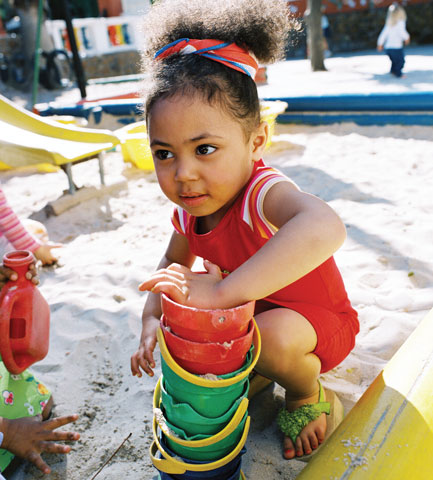
Domain 4: Quantity & Numbers
Standard: Children demonstrate awareness of quantity, counting, and numeric competencies. Children have an early awareness of number concepts. In infancy, children begin to learn about quantity through interactions with their environment and their caregivers. They begin to demonstrate the understanding of “more” through body language. For example, children may lean their head forward during mealtimes…
-

Domain 4: Logic & Reasoning
Standard: Children demonstrate the ability to use knowledge, previous experiences, and trial and error to make sense of and impact their world. Children use imitation, cause and effect, and trial and error to build their logic and reasoning skills. Children learn these skills through everyday interactions with their caregivers. From very early on, children discover…
-

Domain 4: Creative Expression
Standard: Children demonstrate the ability to convey ideas and emotions through creative expression. Creative expression refers to how children use music, movement, building, and play to express themselves. From a very early age, children demonstrate an interest in sounds, colors, objects, and textures. In infancy, children engage in sensory exploration; they mouth different objects to…
-
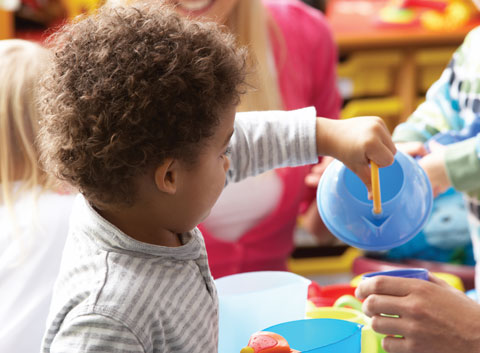
Domain 4: Symbolic Thought
Standard: Children demonstrate the understanding of concepts, experiences, and ideas through symbolic representation. Children learn about objects, actions, and people through observations, interaction, and exploration. They take information in through all of their senses to build a basic understanding of the world around them. By eight months of age, children develop object permanence—they know that…
